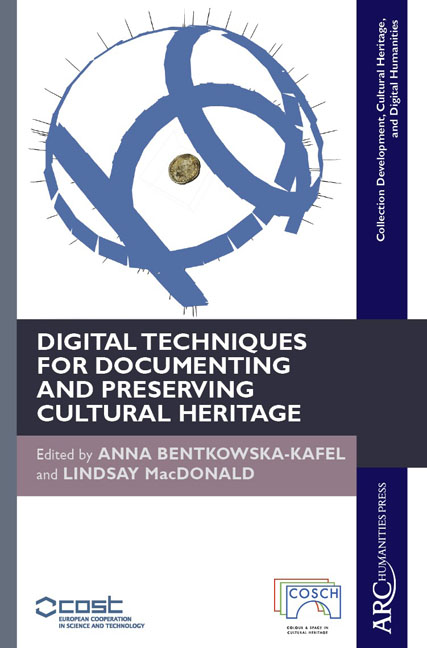Laser-Induced Breakdown Spectroscopy (LIBS)
Published online by Cambridge University Press: 26 January 2021
Summary
COSCH Case Study that has employed this technology: Germolles
Definition
Laser-induced breakdown spectroscopy (LIBS) is a type of atomic emission spectroscopy which uses a high-energy laser pulse as the excitation source. The laser focuses on the sample, which atomizes, excites, and ionizes the material inducing the creation of plasma. The light emitted by the plasma is analysed through a spectrometer. The emission lines are characteristic of each type of atom present in the plasma that enable an elemental identification to be made. In principle, LIBS can analyse any type of matter regardless of its physical state, be it solid, liquid, or gas.
Description
Although LIBS is better known for its industrial applications, this analytical technique can be successfully used for cultural heritage characterization. Many publications have been devoted to the identification of pigments and stones, or archaeological metal characterization (Anglos and Detalle 2014). The conservation of wall paintings is a significant part of our activities at the Laboratoire de Recherche des Monuments Historiques (LRMH) laboratory, which is part of the French Ministry of Culture and Communication. The research has two main directions: the study and identification of materials, including the development of new investigation techniques, and the diagnosis for conservation and restoration.
Dealing with this kind of heritage, we often face very heterogeneous and large surfaces (up to several hundred square metres). Their study requires a corresponding number of samples to be removed from the wall and then analysed in laboratory via “traditional” techniques such as optical microscopy and scanning electron microscopy, coupled with energy dispersive spectroscopy, infrared spectroscopy, or X-ray diffraction. Therefore, the acquisition of knowledge about the materials is hampered by lengthy analytical processes in the laboratory. In order to reduce the need for sampling by the selection of relevant areas, and to obtain topographical information about the distribution of materials on the surface, and also to improve the direct understanding of materials, the LRMH has developed over the past ten years a portable instrument for laser-induced breakdown spectroscopy (LIBS) for elemental investigations. In fact most of the materials found in wall paintings are metal oxides or salts, so LIBS appears to be a suitable technique for the identification of both pigments and the products of degradation. Indeed LIBS is characterized by high sensitivity and selectivity and can be performed in situ.
- Type
- Chapter
- Information
- Publisher: Amsterdam University PressPrint publication year: 2018



